In the race for electric supremacy, two contenders stand out: the BYD Seal U and the Ford Explorer EV. Each brings a unique array of features, innovations, and specifications to the table. This article will delve into the technical aspects of these two electric SUVs, highlighting their strengths and weaknesses to help potential buyers make an informed decision.
BYD Seal U vs Ford Explorer EV – Which one offers the better deal?
Everyday use, family trips or long-distance drives – here’s where the differences show.
Discover whether BYD Seal U or Ford Explorer EV fits your lifestyle better.
Design and Dimensions
The BYD Seal U is a striking SUV that measures 4775 mm in length, 1890 mm in width, and stands at a height of 1670 mm. This spacious design accommodates up to five passengers, providing them with comfort and ample luggage space. The trunk capacity of 425 liters is decent, but it competes closely with the Ford Explorer EV, which offers a trunk capacity of 450 liters.
On the other hand, the Ford Explorer EV, although slightly smaller at 4468 mm long, still manages to provide a robust presence on the road. Its dimensions also allow for a roomy interior, making the car suitable for families. The Explorer EV sports modern aerodynamic lines that are attractive yet functional, optimizing efficiency and performance.
Powertrain and Performance
BYD Seal U: The Seal U is offered with two engine options—a plugin hybrid and a full electric variant. The electric variant delivers a maximum power of 324 HP and 330 Nm of torque, which allows for a brisk acceleration from 0-100 km/h in just 5.9 seconds. It boasts an electric range of up to 500 km, making it ideal for long-distance journeys. Additionally, the vehicle has an efficient energy consumption rate of 19.9 kWh/100 km and a CO2 emission rating of class A.
Ford Explorer EV: The Explorer EV takes an all-electric approach, featuring power outputs ranging from 204 HP to an impressive 340 HP in its most powerful form. It can accelerate from 0-100 km/h in as little as 5.3 seconds. With a robust electric range of up to 602 km, the Explorer EV positions itself as an excellent option for electric travel without the anxiety of frequent recharging. Its efficiency is remarkable, achieving energy consumption rates from 13.9 to 16.6 kWh/100 km.
Drive Options and Technology
The BYD Seal U comes equipped with advanced drivetrain options, including both front-wheel drive and all-wheel drive configurations. This versatility allows drivers to choose based on their driving preferences or environmental conditions. The BYD’s innovative CVT and reduction gearbox transmission provide smooth operation and efficiency.
In contrast, the Ford Explorer EV predominantly features rear-wheel drive and can also be had with an all-wheel drive layout. Its automatic transmission with a reduction gearbox enhances driving dynamics, ensuring a thrilling yet comfortable ride. Both vehicles showcase cutting-edge technology that aids in handling and responsiveness on the road.
Interior and Technology Features
Inside the BYD Seal U, technology thrives with a driver-centric layout. An expansive infotainment system with connectivity features ensures that occupants are always in touch with the outside world. The vehicle's design places a strong emphasis on comfort and usability, making every ride enjoyable.
The Ford Explorer EV also shines in terms of technology with its advanced infotainment system, complete with over-the-air updates and numerous driver-assist features. Both models promise a high level of connectivity, comfort, and luxury, tailored to modern drivers' needs.
Safety and Sustainability
When it comes to safety, both vehicles are equipped with a plethora of advanced safety features that provide peace of mind for drivers and passengers alike. The BYD Seal U achieves a CO2 efficiency rating of class A, emphasizing its commitment to sustainability in EV manufacturing.
The Ford Explorer EV, holding a perfect rating of 0 g/km CO2 emissions, takes a front seat as a leader in environmentally friendly automobiles. Both models are stepping stones towards a more sustainable future in the automotive industry.
Conclusion
The BYD Seal U and Ford Explorer EV each offer exceptional benefits, with distinct characteristics that cater to different consumer preferences. The Seal U excels with its power and hybrid options, while the Explorer EV takes the lead with its impressive range and technological innovations. Ultimately, your choice will depend on your specific needs—be it range, efficiency, or the combination of luxury features. As electric vehicles continue to evolve, both of these models are poised to make a significant impact in the world of automotive transport.
Here’s where it gets real: The technical differences in detail
Costs and Efficiency:
Price and efficiency are often the first things buyers look at. Here it becomes clear which model has the long-term edge – whether at the pump, the plug, or in purchase price.
Ford Explorer EV has a slight advantage in terms of price – it starts at 34200 £, while the BYD Seal U costs 34300 £. That’s a price difference of around 77 £.
In terms of energy consumption, the advantage goes to the Ford Explorer EV: with 14.50 kWh per 100 km, it’s distinct more efficient than the BYD Seal U with 19.90 kWh. That’s a difference of about 5.40 kWh.
As for range, the Ford Explorer EV performs somewhat better – achieving up to 602 km, about 102 km more than the BYD Seal U.
Engine and Performance:
Power, torque and acceleration are the classic benchmarks for car enthusiasts – and here, some clear differences start to show.
When it comes to engine power, the Ford Explorer EV has a barely noticeable edge – offering 340 HP compared to 324 HP. That’s roughly 16 HP more horsepower.
In acceleration from 0 to 100 km/h, the Ford Explorer EV is somewhat quicker – completing the sprint in 5.30 s, while the BYD Seal U takes 5.90 s. That’s about 0.60 s faster.
There’s no difference in top speed – both reach 180 km/h.
There’s also a difference in torque: Ford Explorer EV pulls to a small extent stronger with 679 Nm compared to 550 Nm. That’s about 129 Nm difference.
Space and Everyday Use:
Whether family car or daily driver – which one offers more room, flexibility and comfort?
Both vehicles offer seating for 5 people.
In curb weight, Ford Explorer EV is slight lighter – 1908 kg compared to 1940 kg. The difference is around 32 kg.
In terms of boot space, the BYD Seal U offers somewhat more room – 552 L compared to 450 L. That’s a difference of about 102 L.
In maximum load capacity, the BYD Seal U performs minimal better – up to 1465 L, which is about 43 L more than the Ford Explorer EV.
When it comes to payload, Ford Explorer EV noticeable takes the win – 585 kg compared to 410 kg. That’s a difference of about 175 kg.
Who comes out on top?
Overall, the Ford Explorer EV shows itself to be wins the duel decisively and secures the title of DriveDuel Champion.
It convinces with the more balanced overall package and proves to be the more versatile choice for everyday use.
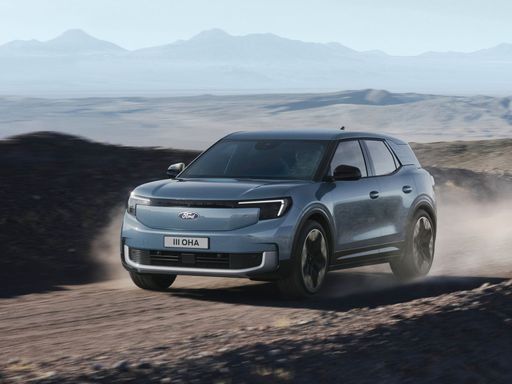 @ Ford Motor Company / Ford Media Center
@ Ford Motor Company / Ford Media Center
Ford Explorer EV
BYD Seal U
The BYD Seal U pairs a sleek fastback silhouette with a surprisingly roomy, tech-rich cabin, giving electric chic without the showroom pretension. It's a smart pick for buyers after confident handling, sensible practicality and standout value — all wrapped up with a cheeky grin when you put your foot down.
details @ BYD Auto / BYD Global Media
@ BYD Auto / BYD Global Media
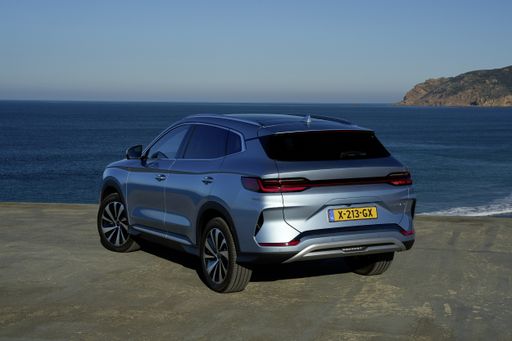 @ BYD Auto / BYD Global Media
@ BYD Auto / BYD Global Media
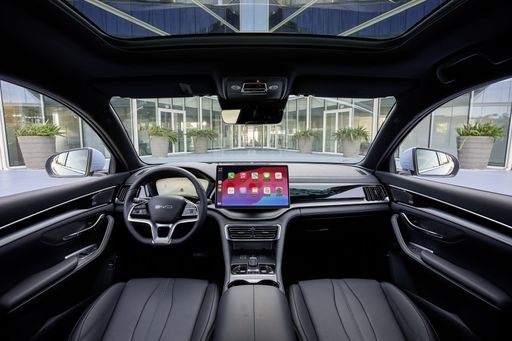 @ BYD Auto / BYD Global Media
@ BYD Auto / BYD Global Media
Ford Explorer EV
The Ford Explorer EV translates the familiar big‑American SUV presence into whisper‑quiet electric motoring, offering roomy seating and a tech‑forward cabin that will please families and road‑trippers alike. It drives with more composure than its boxy looks suggest, blending a comfortable ride and eager acceleration while undercutting the guilt of gas stops — a practical, modern alternative for buyers who want Explorer space with electric charm.
details @ Ford Motor Company / Ford Media Center
@ Ford Motor Company / Ford Media Center
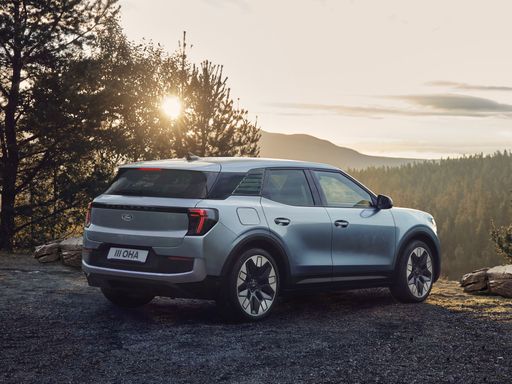 @ Ford Motor Company / Ford Media Center
@ Ford Motor Company / Ford Media Center
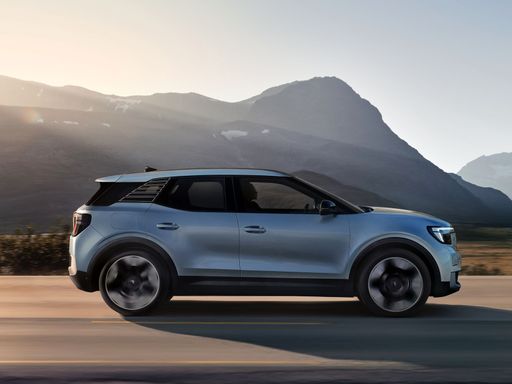 @ Ford Motor Company / Ford Media Center
@ Ford Motor Company / Ford Media Center
 @ BYD Auto / BYD Global Media
@ BYD Auto / BYD Global Media
|
 @ Ford Motor Company / Ford Media Center
@ Ford Motor Company / Ford Media Center
|
|
|
|
Costs and Consumption |
|
|---|---|
|
Price
34300 - 39800 £
|
Price
34200 - 48800 £
|
|
Consumption L/100km
0.4 - 1.2 L
|
Consumption L/100km
-
|
|
Consumption kWh/100km
19.9 - 20.5 kWh
|
Consumption kWh/100km
14.5 - 17.2 kWh
|
|
Electric Range
70 - 500 km
|
Electric Range
360 - 602 km
|
|
Battery Capacity
-
|
Battery Capacity
52 - 79 kWh
|
|
co2
0 - 26 g/km
|
co2
0 g/km
|
|
Fuel tank capacity
60 L
|
Fuel tank capacity
-
|
Dimensions and Body |
|
|---|---|
|
Body Type
SUV
|
Body Type
SUV
|
|
Seats
5
|
Seats
5
|
|
Doors
5
|
Doors
5
|
|
Curb weight
1940 - 2147 kg
|
Curb weight
1908 - 2179 kg
|
|
Trunk capacity
425 - 552 L
|
Trunk capacity
445 - 450 L
|
|
Length
4775 - 4785 mm
|
Length
4468 mm
|
|
Width
1890 mm
|
Width
1871 mm
|
|
Height
1668 - 1670 mm
|
Height
1630 - 1639 mm
|
|
Max trunk capacity
1440 - 1465 L
|
Max trunk capacity
1417 - 1422 L
|
|
Payload
410 kg
|
Payload
561 - 585 kg
|
Engine and Performance |
|
|---|---|
|
Engine Type
Plugin Hybrid, Electric
|
Engine Type
Electric
|
|
Transmission
Automatic
|
Transmission
Automatic
|
|
Transmission Detail
CVT, Reduction Gearbox
|
Transmission Detail
Reduction Gearbox
|
|
Drive Type
Front-Wheel Drive, All-Wheel Drive
|
Drive Type
Rear-Wheel Drive, All-Wheel Drive
|
|
Power HP
218 - 324 HP
|
Power HP
170 - 340 HP
|
|
Acceleration 0-100km/h
5.9 - 9.6 s
|
Acceleration 0-100km/h
5.3 - 8.7 s
|
|
Max Speed
170 - 180 km/h
|
Max Speed
160 - 180 km/h
|
|
Torque
300 - 550 Nm
|
Torque
310 - 679 Nm
|
|
Number of Cylinders
4
|
Number of Cylinders
-
|
|
Power kW
160 - 238 kW
|
Power kW
125 - 250 kW
|
|
Engine capacity
1497 - 1498 cm3
|
Engine capacity
-
|
General |
|
|---|---|
|
Model Year
2024
|
Model Year
2024 - 2025
|
|
CO2 Efficiency Class
B, A
|
CO2 Efficiency Class
A
|
|
Brand
BYD
|
Brand
Ford
|
What drive types are available for the BYD Seal U?
The BYD Seal U is available as Front-Wheel Drive or All-Wheel Drive.
The prices and data displayed are estimates based on German list prices and may vary by country. This information is not legally binding.
